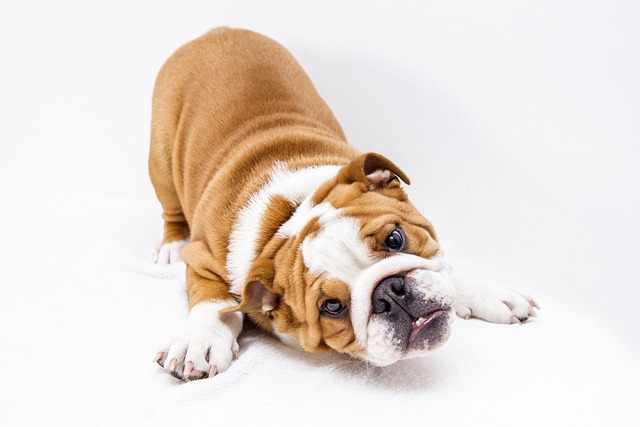
Can dental disease cause kidney failure in dogs?
Most dog owners notice when their pup’s breath turns especially stinky, but few realize that bad breath can signal more than just a need for a chew toy.
I’ll start with a relatable scenario of two owners seeing different results with cooling vests for their pups, explain why effectiveness varies by breed, health, and vest type, share how to find the right fit for your dog, and weave in safety and etiquette tips naturally.
I sat on a bench in Denver’s Washington Park last week, watching my friend Lena’s 2-year-old Cocker Spaniel, Mabel, trot happily in her cooling vest—while her neighbor’s 5-year-old Pug, Gus, panted heavily in his, barely keeping up. “Why does Mabel love hers but Gus hates it? Do cooling vests work for all dogs, or is this a breed thing?” Lena asked, handing Gus a bowl of water. If you’re a new U.S. dog owner prepping for hot weather, the answer is clear: cooling vests work for most dogs, but not all—effectiveness depends on your dog’s breed, health, and the vest’s design. The right vest protects against heatstroke, but the wrong one can cause discomfort or even harm.
To understand if cooling vests work for all dogs, let’s break down canine physiology and vest mechanics. Lena’s vet, Dr. Carter, explained that dogs cool down through panting (they can’t sweat like humans), so cooling vests work by lowering core body temperature—either via evaporative cooling (soaked in water) or ice packs. But flat-faced breeds (like Gus the Pug) have shorter snouts, making panting less effective—they need vests that target the chest and belly (areas with less fur) to work. Mabel, a medium-haired, long-snouted breed, cools easily with an evaporative vest; Gus needs a gel-pack vest that delivers direct cold. Health issues matter too: dogs with heart disease or thick double coats (like Huskies) may need lighter vests or shorter wear times. Unlike toys or treats, cooling vests are functional tools—one size (or type) doesn’t fit all. Scolding a dog for rejecting a vest (like the neighbor almost did with Gus) violates U.S. animal welfare standards; Gus wasn’t being “stubborn”—the vest was too tight and didn’t cool him, and our job is to find the right fit, not force it.

Here’s how to tell if a cooling vest will work for your dog, and how to choose the best one (using Lena’s tips for Mabel and Gus): First, match the vest type to your dog’s breed and coat. Dr. Carter told Lena that long-snouted, medium-haired dogs (Mabel) thrive with evaporative vests—they’re lightweight and use the dog’s movement to speed up cooling. Flat-faced breeds (Gus) or thick-coated dogs need gel-pack vests that provide consistent cold, no soaking required. For apartment living, Lena hangs Mabel’s evaporative vest to dry after use (prevents mold), while the neighbor stores Gus’s gel-pack vest in the fridge (ready to use). Second, prioritize fit over style (snug but not restrictive). Mabel’s vest has adjustable straps (Lena can fit two fingers under it), so it moves with her; Gus’s old vest was too tight, chafing his armpits. The neighbor swapped it for a vest with a stretchy belly band—Gus now wears it without fuss. Third, test for comfort (never skip a trial run). Lena first put Mabel’s vest on indoors (air-conditioned) for 10 minutes, rewarding her with treats—Mabel learned it meant “fun walks.” The neighbor did the same with Gus, stopping if he scratched or panted excessively. Positive reinforcement turns the vest into a “good thing,” not a chore. Fourth, avoid vests for dogs with health red flags. Dr. Carter warned against vests for dogs with skin allergies (some fabrics cause irritation) or heart conditions (tight vests restrict movement). For these pups, stick to shaded walks and frequent water breaks instead.
For outdoor and community norms, choosing the right cooling vest ties to good habits: Lena uses Mabel’s vest for morning park walks (the hottest part of the day) and carries biodegradable poop bags (Denver fines $100 for uncollected waste)—the vest keeps Mabel comfortable enough for full potty breaks. She avoids crowded dog parks with Mabel’s vest on (less chance of it getting tugged) and lets other owners feel it (helping them choose for their pups). The neighbor now takes Gus on shorter walks with his gel-pack vest, bringing a portable water bowl (etiquette for hot-weather outings). Both keep their dogs’ rabies vaccines up to date (mandatory nationwide)—hot weather means more dog interactions, and healthy dogs handle heat better. Dr. Carter reminded them of signs a vest isn’t working: excessive panting, scratching, or slowing down—if your dog shows these, remove the vest immediately. “Cooling vests are helpers, not heroes,” he said. “They work if you pick the right one for your dog—and pair it with shade, water, and short walks.”
Three days later, Lena texted me a photo: Mabel and Gus playing in the park, both in their new vests, no panting. Do cooling vests work for all dogs? For Mabel and Gus, yes—once they had the right fit and type. For your pup, it’s about breed, health, and choosing wisely. A good cooling vest turns hot walks into fun ones—but only if it’s made for your dog.

Most dog owners notice when their pup’s breath turns especially stinky, but few realize that bad breath can signal more than just a need for a chew toy.

I’ll start with a relatable scenario of two owners seeing different results with cooling vests for their pups, explain why effectiveness varies by breed, health, and vest type

Cooling vests can be fantastic tools for preventing heatstroke, but like any specialized gear, they do carry potential side effects when used improperly.

I’ll open with a tense scenario of a new owner realizing their pup ate a harmful fruit, explain why certain fruits are unsafe

Dogs can’t tell you when their eyes hurt, so spotting the difference between an eye infection and allergies often comes down to watching small, daily cues.

Dogs are curious by nature—they’ll sniff, lick, or even nibble at things that catch their eye, which can lead to accidental poisoning. Common culprits in many homes include chocolate, grapes, and certain houseplants like lilies.